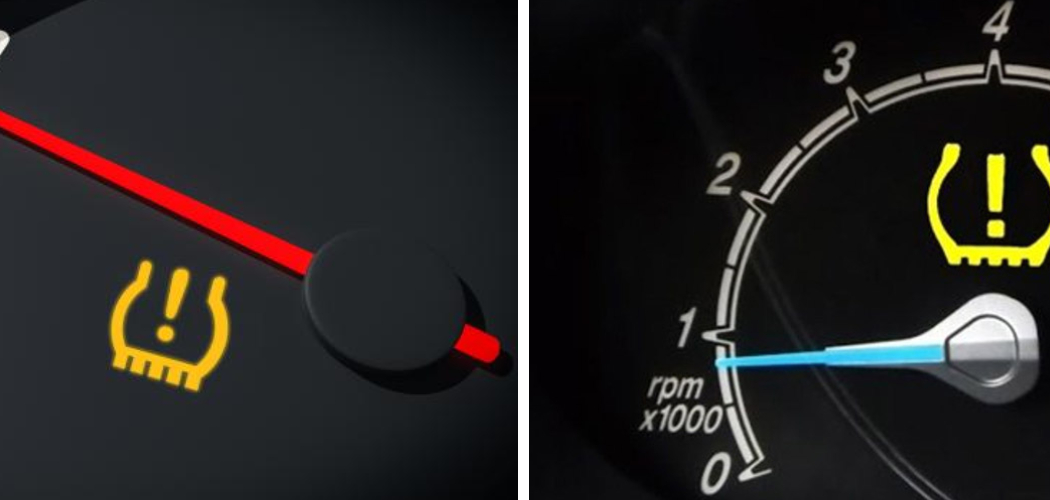Welcome to our comprehensive guide on “how to clear service tire monitor system” where we delve into the crucial aspect of vehicle maintenance – tire pressure monitoring. The TPMS plays a pivotal role in ensuring your safety on the road by alerting you about potential tire pressure issues.

Whether you’re a seasoned driver or new to vehicle maintenance, this article will equip you with the knowledge and confidence to address the TPMS warning light. From understanding the system’s workings to troubleshooting common issues, our guide is here to help you keep your vehicle’s tires in optimal condition for a smooth and safe driving experience.
Understanding the Tire Pressure Monitoring System (TPMS)
A. What is the TPMS, and Why is it Important?
The Tire Pressure Monitoring System (TPMS) is an automated system designed to monitor the air pressure inside the pneumatic tires on various types of vehicles. This safety feature alerts you when one or more tires are significantly under-inflated, possibly posing a risk to vehicle performance and safety.
Properly inflated tires are essential for safe driving; they provide better traction, reduce stopping distances, improve fuel efficiency, and decrease the likelihood of tire blowouts. By providing timely warnings, the TPMS helps maintain proper tire pressure, which is crucial for your tires’ longevity and safety on the road.
B. Different Types of TPMS: Direct vs. Indirect
The main types of TPMS are direct (dTPMS) and indirect (iTPMS). A direct TPMS uses sensors inside the tire to accurately measure air pressure and transmit this information to the vehicle’s onboard computer system.

Conversely, an indirect TPMS works with the anti-lock braking system (ABS) to infer pressure levels by monitoring the rotational speed of the tires; a deflated tire has a smaller diameter and spins faster than its properly inflated counterparts.
Both systems alert the driver with a dashboard indicator light when tire pressure is inadequate, but direct systems are known for their precision and ability to provide tire-specific information.
C. Common Reasons for the “Service Tire Monitor System” Warning
The “Service Tire Monitor System” warning can be triggered by several issues: a tire pressure below or above the manufacturer’s recommendation, malfunctioning sensors due to battery failure or damage, and communication errors between sensors and the TPMS module.
Seasonal temperature changes can also lead to false alerts, as tire pressure can fluctuate with ambient temperature. It’s essential to investigate the root cause of the warning accurately – it could be as simple as a change in weather or as serious as a failing TPMS sensor.
How to Clear Service Tire Monitor System: Checking and Adjusting Tire Pressure
1. Importance of Maintaining Proper Tire Pressure
Maintaining the correct tire pressure is crucial for optimal vehicle performance and safety. Properly inflated tires ensure the best possible contact with the road, leading to improved handling, better gas mileage, and a reduced risk of tire-related accidents.
Under or over-inflated tires can cause poor handling, uneven tread wear, increased stopping distances, and even tire blowouts. Regularly checking tire pressure is a simple yet effective maintenance step that can prolong the life of your tires and enhance your driving experience.
2. Finding the Recommended Tire Pressure for Your Vehicle
The recommended tire pressure for your vehicle is typically found on a sticker located on the driver’s side door jamb or in the vehicle’s owner’s manual. The automaker specifies it based on the tire size, load capacity, and vehicle type.
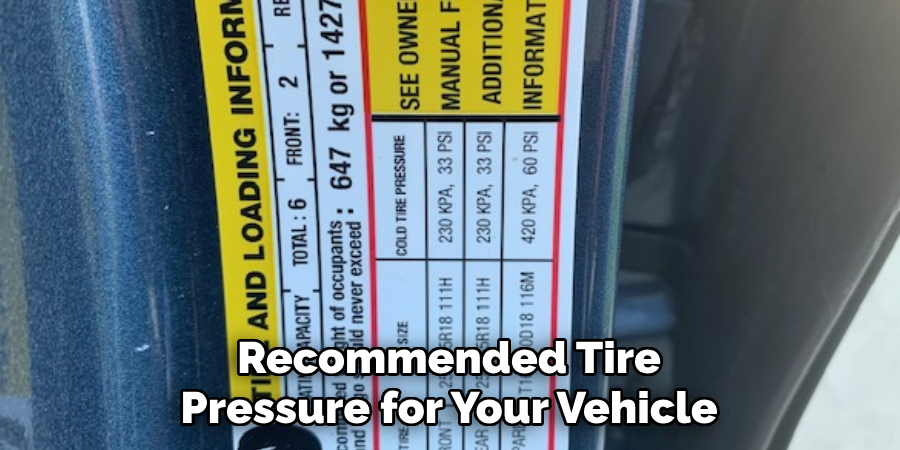
Ensure you look at the right figures for the front and rear tires, as they differ. Checking this information is the first step in maintaining your tires for safe driving conditions and should be adhered to as closely as possible.
3. How to Use a Tire Pressure Gauge
To use a tire pressure gauge, first ensure that the tires are “cold” – parked for at least three hours or not driven more than a mile. Remove the valve cap from the tire, press the tire gauge onto the valve stem, and read the pressure from the gauge.
Digital, dial, and stick tire gauges all function similarly but can vary in ease of reading; choose one that you find reliable and easy to use. If the gauge shows a pressure lower than the recommended level, you will need to add air. If it’s higher, let some air out and check again.
4. Filling Your Tires with Air
To fill your tires with air, you’ll need access to an air compressor, which you can find at most gas stations. Remove the valve stem cap, attach the air hose to the valve stem, and fill the tire in short bursts. Check the tire pressure frequently with your gauge to avoid overfilling.
If you’ve added too much air, release some by pressing the pin in the center of the valve stem, then recheck the pressure. Replace the valve stem cap tightly after reaching the correct pressure.
5. Checking for Leaks and Uneven Tread Wear
Examine each tire for signs of leaks, such as nails or other objects, and listen for hissing sounds that indicate escaping air. Apply soapy water to the valve stem and watch for bubbles that can signal a leak.

Additionally, assess the tires for uneven tread wear, which improper inflation, misaligned wheels, or suspension issues can cause. Uneven wear can threaten the integrity and safety of your tire and should be addressed by a professional if noticed.
How to Clear Service Tire Monitor System: Resetting the TPMS Manually
1. Warning: Not All Systems Can Be Reset Manually
It’s important to note that not all vehicles allow for a manual reset of the Tire Pressure Monitoring System (TPMS). Before attempting any reset procedures, check your vehicle’s owner manual or consult with a professional to determine the capabilities of your specific TPMS.
2. Identifying Your Vehicle’s TPMS Reset Procedure
The reset procedure for your vehicle’s TPMS will vary depending on the make and model. Your owner’s manual is the most reliable source for specific instructions.
Some vehicles may have a reset button for the TPMS, while others could require a series of actions, such as turning the ignition on and off or driving for a set distance. Always follow your manufacturer’s recommended procedures to ensure a proper reset.
3. Common Manual Reset Methods for Different Car Brands
For many car brands, resetting the TPMS can be done through simple methods.
Using the instrument cluster buttons
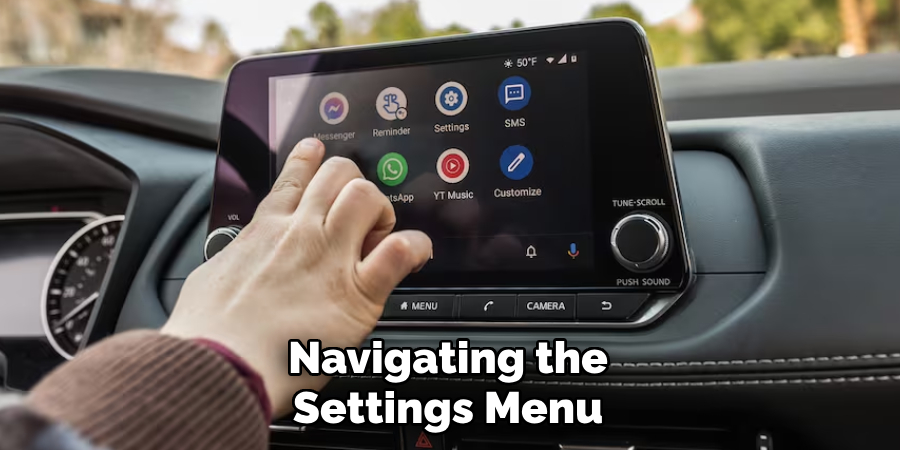
Some vehicles equipped with a driver information center allow you to reset the TPMS by navigating the settings menu using the instrument cluster buttons. The menu will typically have an option labeled ‘Tire Pressure,’ ‘TPMS,’ or something similar. By selecting this, you can then follow the prompts to initiate the reset process.
Driving in a specific pattern
To recalibrate the system, other vehicles may require you to drive at a certain speed for a specified distance. Typically, this involves driving at uninterrupted speeds of 50-60 mph for 10-20 minutes. Always confirm the exact pattern needed as specified in your owner’s manual, as it can vary widely between manufacturers.
4. Additional Considerations for Specific Car Models
In addition to standard reset methods, certain car models might have specific considerations. For example, some luxury cars may involve a multi-step process that includes using diagnostic tools or executing a series of specific vehicle functions in a precise order. Vehicles with an indirect TPMS may re-calibrate automatically once the tires are inflated to the correct pressure and the vehicle is driven.
On the other hand, those with a direct TPMS may require a manual re-learning process for the system to recognize each sensor after a tire rotation or replacement. This could involve using a specialized TPMS tool to reprogram the sensors to the vehicle’s ECU. Always take extra care to understand the nuances of your vehicle’s TPMS to avoid any complications or malfunctions.
Seeking Professional Help
A. When to Consult a Mechanic
If you frequently encounter tire pressure alerts despite proper inflation or if your TPMS warning light remains illuminated after resetting the system, it may indicate a deeper issue requiring professional attention. Additionally, if you detect tire damage or persistent leaks or you’re experiencing uneven tread wear that isn’t resolved through typical maintenance measures, a skilled mechanic should be consulted.

They can perform a comprehensive assessment, address any underlying causes, and ensure all components of your vehicle’s TPMS system are functioning correctly. Safety is paramount—do not hesitate to get expert advice when your tire health or TPMS signals are in doubt.
B. What to Expect During a TPMS Service
During a TPMS service, a technician will typically conduct a diagnostic scan to identify any fault codes related to the system. They will inspect the physical condition of the TPMS sensors, check the battery life, and verify their responsiveness.
The service may include the replacement of faulty sensors, reprogramming the TPMS, or updating the system software as needed. In some cases, the tires might be removed for a thorough internal examination. Expect the mechanic to also inspect the overall tire health and adjust the tire pressure to the manufacturer’s recommended levels as part of the service.
That’s it! You’ve now learned how to clear service tire monitor system and properly maintain your vehicle’s TPMS. Remember to regularly check your tire pressure and be mindful of any unusual alerts or readings from the system.
By following these steps, you can ensure optimal tire performance, prolong their lifespan, and ensure safe driving for you and your passengers.
Additional Tips and Troubleshooting
A. Importance of Timing the Reset After Filling Tires
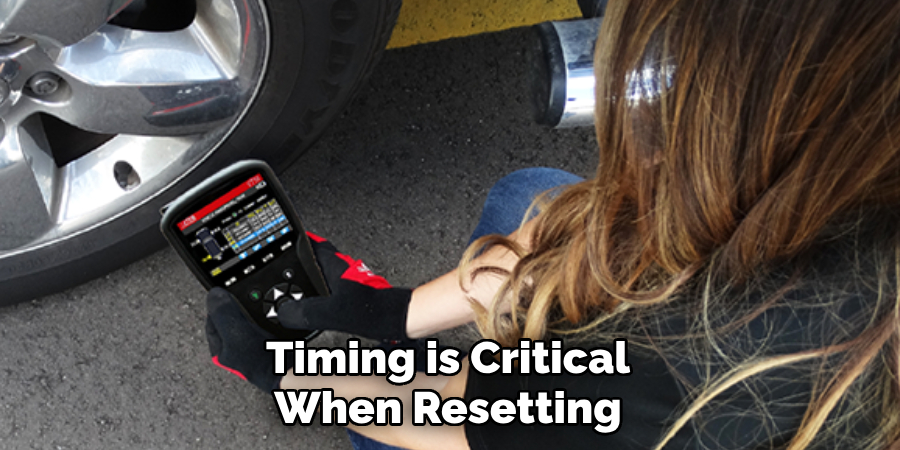
Timing is critical when resetting the Tire Pressure Monitoring System (TPMS) after adjusting tire pressure. Immediately after inflating the tires to the correct pressure, resetting the system ensures accurate readings.
A prompt reset helps avoid the possibility of driving with incorrect tire pressure readings, potentially leading to tire wear or even failure. It also allows the TPMS to recalibrate based on the new pressure levels, enhancing its reliability and your vehicle’s safety.
B. Dealing with Persistent TPMS Warnings
Sensor Malfunction
If your TPMS warning light stays on, a sensor malfunction could be to blame. Each tire has its own sensor, and if just one malfunctions, it could trigger the warning light. Sensors can fail due to a dead battery or damage. In such cases, the faulty sensor must be replaced to restore the system’s functionality.
System Failure
A persistent TPMS warning light might also indicate a system failure. This could be due to issues with the monitoring system’s receiver or wiring problems within its network. Comprehensive diagnostics by a professional mechanic can pinpoint the issue, leading to the necessary repairs.
C. Tips for Preventing Future TPMS Issues
Regular Tire Rotations
Regular tire rotations are a preventive measure to ensure even tire wear and accurate pressure readings. This maintenance step helps prolong the life of your tires and allows sensors to operate effectively by preventing uneven stress that can lead to malfunctions.
Seasonal Pressure Adjustments
Seasonal changes in temperature affect tire pressure. Checking and adjusting the pressure with the changing seasons can prevent the TPMS warning light from coming on due to temperature-induced pressure variations. This simple step can help maintain tire health over time.
D. Alternative Methods for Resetting the TPMS
Using a TPMS Scan Tool
Using a specialized scan tool can be effective for a comprehensive reset or reprogramming of the TPMS. This device communicates directly with the vehicle’s ECU and the TPMS sensors, providing accurate diagnostics, sensor programming, and resetting capabilities. A TPMS tool ensures all sensors function and are correctly linked to the vehicle’s system.
Smartphone Apps
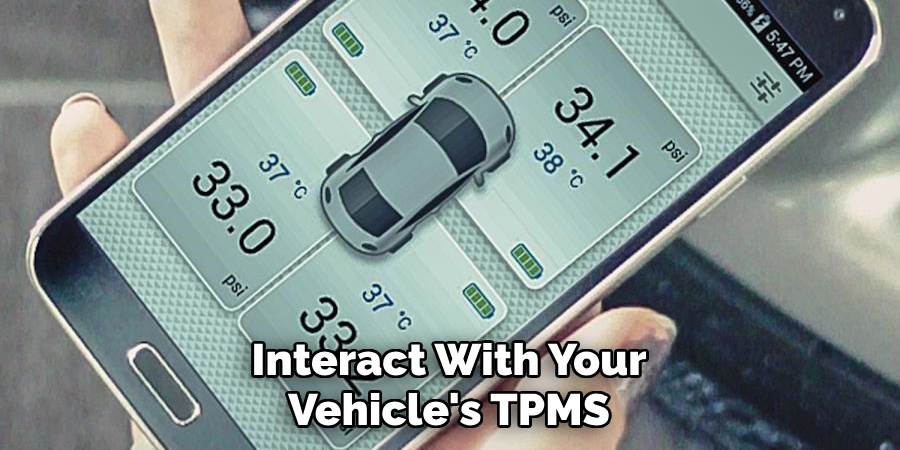
Several smartphone apps have been developed to interact with your vehicle’s TPMS. These apps often work in conjunction with a compatible OBD-II device, wirelessly connecting to the vehicle’s computer system. They can provide a user-friendly interface for monitoring tire pressures, resetting the TPMS, and even diagnosing sensor issues, adding convenience to tire maintenance.
Safety Precautions and Disclaimer
A. Importance of Prioritizing Safety When Working on Your Car
When addressing any maintenance tasks on your vehicle, prioritizing safety cannot be overstated. A lack of attention could lead to accidents, causing personal injury or damage to the vehicle.
Always adhere to the vehicle manufacturer’s guidelines, use the correct tools, and ensure you work safely. If a task extends beyond your skill set or involves complex systems such as the TPMS, seeking professional assistance is not only prudent but essential for maintaining the integrity of your vehicle’s safety features.
B. Disclaimer: Information Provided for Informational Purposes Only
The information contained within this document is intended purely for informational purposes and should not be interpreted as professional automotive advice.
While the guidance offered seeks to assist vehicle owners in understanding and potentially rectifying issues concerning their Tire Pressure Monitoring System (TPMS), readers are cautioned that any maintenance or repairs carried out based on this information are at their own risk.
Always consult with a qualified mechanic for serious vehicle issues, and never compromise on safety, especially when dealing with critical systems that can impact vehicle operation and road safety.
Frequently Asked Questions
A. How Often Should TPMS Sensors Be Replaced?
TPMS sensors typically have a lifespan of 5 to 10 years or about 100,000 miles. However, their battery life and the conditions they are exposed to (such as extreme temperatures and road salt) can vary in this range. It’s best to have them inspected regularly during routine maintenance.
B. Will My TPMS Work with Aftermarket Wheels?
Most TPMS systems can function with aftermarket wheels as long as the wheels are compatible with the TPMS sensors from your original wheels. Some aftermarket wheels may require different sensors or adaptors, so it is essential to confirm compatibility before installation.
C. Can I Reset the TPMS Myself?
In many cases, yes. The process to reset the TPMS varies by vehicle model. Some require a simple procedure that can be done at home, while others might need a specialized reset tool or a visit to a mechanic.
D. What Does It Mean if The TPMS Warning Light Flashes and Then Stays On?
A flashing TPMS warning light followed by a steady illumination can indicate a malfunction with the system itself, not necessarily low tire pressure. This requires a diagnostic check to identify and rectify any sensor or TPMS system issues.
E. Is It Safe to Drive with The TPMS Warning Light On?
While driving for a short distance is possible, it should be done with caution, and the tire pressure should be checked as soon as possible. Driving for an extended period with incorrect tire pressure can lead to tire damage, reduced fuel efficiency, and unsafe driving conditions.
Conclusion
This guide has navigated the intricacies of the Tire Pressure Monitoring System (TPMS), highlighting the importance of maintaining correct tire pressure for road safety and vehicle performance.
We discussed how to clear service tire monitor system alerts, the significance of timely TPMS diagnostics, and the essentiality of seasonal pressure adjustments and regular tire rotations to preclude future issues.
We encourage all drivers to take a proactive stance on tire maintenance, recognizing its pivotal role in ensuring safety on the roads and preserving tire health.
By following these tips, utilizing alternative methods for TPMS resetting, and prioritizing safety while working on your vehicle, you can keep the TPMS functioning optimally and enjoy a smooth ride every time. Always consult a qualified mechanic for any major issues or concerns regarding your vehicle’s TPMS. Drive safely!

